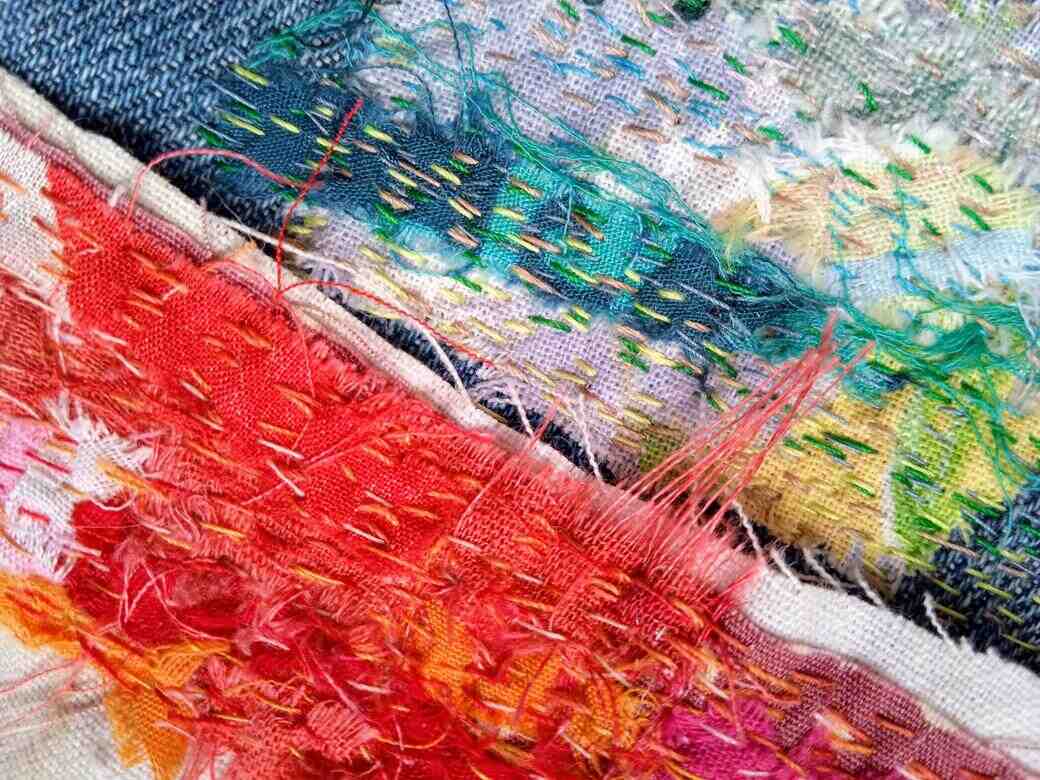craft /krɑːft/ verb – gerund or present participle: crafting
Exercise skill in making (an object), typically by hand.
I’m sure you know what it’s like, when you have dozens of half-finished projects lying about in baskets and bags or piled-up in the corner of a room. Procrastination and guilt have almost certainly set-in, a fear of starting anything new. Friends and family accuse you of “never finishing anything” because all they see is bags and bags of stuff!
If that sounds familiar? Then this is for you!


In reality you do finish many things, however, you seem to start new projects faster than you can finish them. Often the half-finished doll design or knitting pattern that filled you with enthusiasm last winter, has lost some of it’s appeal now, as the morning sun streams in through the bedroom window on a new day and casts a bright light on more exciting ideas brewing in an overactive and sometimes insomniatic, creative mind.
PLEASE NOTE: ‘Insomniatic’ might not be a real word. Apparently I’m in the habit of making up new words, when nothing else quite fits the bill!
I like to read blogs by other artists and writers for inspiration, more for their process and project management than anything else. Ideas for effectively managing time, work load, orders etc… while not stifling creativity and the generation of new ideas.
We all experience times when we lack motivation, struggle to get going or become overwhelmed. In my case, by a precariously balanced pile of ‘to do lists’ that threaten to tumble like an avalanche and bury me. I have to admit I haven’t quite mastered this balancing act and life often likes to throw a spanner in the works, scuppering carefully laid plans.
So the idea is, a plan without much of a plan, more an idea, a guideline, a focal point, call it what you will.
Welcome to The Crafting Creativity Project, an 8 step, self-help guide to get you back on tract to being creative, being productive and hopefully having fun creating.
Step 1. Clear the decks - Be ruthless - Be organised


Tidy your work space, whether that’s your spot on the sofa in the corner or a whole studio space, that old saying
‘Can’t see the wood for the trees’
I’m a great believer in that, both in your mind and your space, so have a tidy up and find places for things.
That pile of lists? find a bull dog clip or using a needle and thread, string them together.
That jumper you started 15 years ago and have only finished the back and half an arm, do you still love it? Does it still have the same value and appeal it had 15 years ago? If yes great it’s one of those projects you can make a commitment to finish. If not re-purpose, re-use, frog it for the yarn.
It’s difficult but you will feel a lot better for addressing these decisions you have been putting off for years.
Try the 3-pile method if it helps? 1. Yes 2. No 3. Maybe
Perhaps limit the number of projects you allow yourself to keep?
Organise your space to make it easier for you to work. I have a basket for work-in-progress so I can easily take it anywhere, if for example it’s a sewing project I will make sure I include scissors, thread, pin cushion etc… all the things I need so it’s ready and waiting.
Step 2. Make a commitment 30 minutes a day (30 days x 30 minutes = 900 minutes = 15 hours)


I’m making a commitment to do 30 minutes of creativity a day, you might choose 10 minutes or 1 hour, it’s your choice but little and often, it’s surprising how it mounts up. 30 minutes a day amounts to 15 hours a month, 10 minutes a day amounts to 5 hours a month, that’s like spending a whole afternoon creating, and whereas finding a whole afternoon for yourself may seem impossible, 10 minutes a day feels a lot more achievable.
Step 3. Collect - ideas, materials, inspiration, scraps.

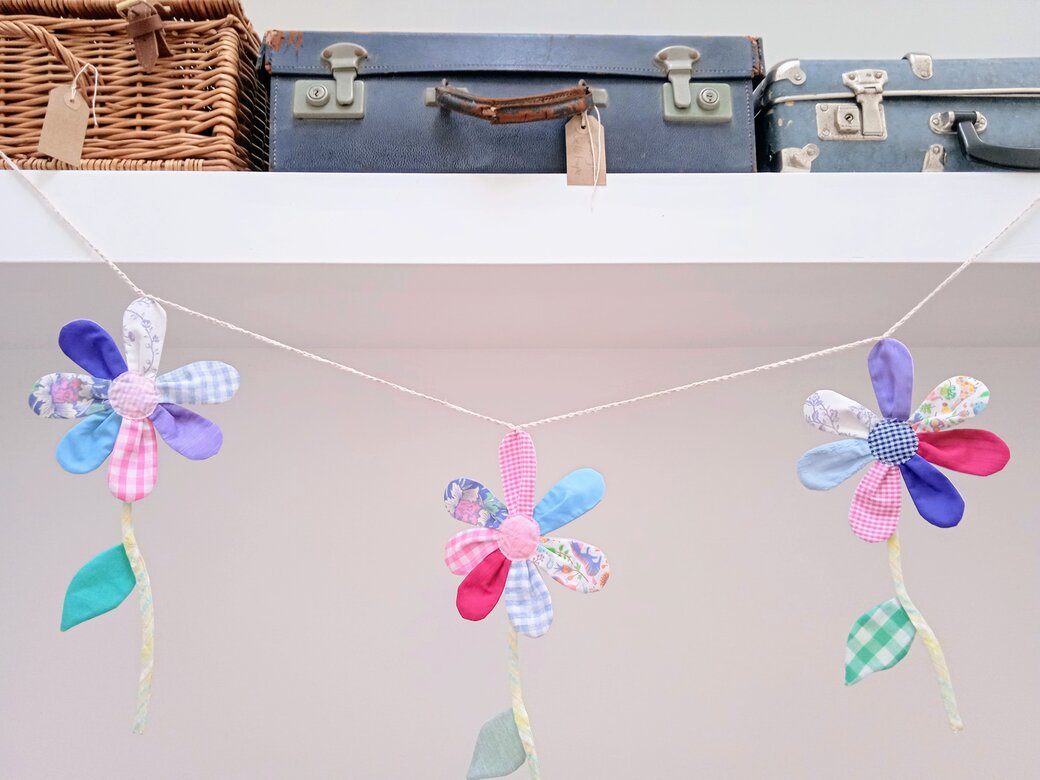
Collect, collect, collect and then…collect some more.
Scraps of paper, discarded packaging materials, old clothes, used teabags, images, ideas…become a collector…the difference between a collector and a hoarder is organisation.
I prefer baskets and old suitcases, I love the look of them but they are also great for organising and storing your supplies. I have paints in one, fabric scraps in another, scraps of paper and cardboard from discarded packaging in another. The main idea here is that everything is organised and has a home. Use luggage labels to list the contents so you can easily find what you’re looking for.
It’s okay, even essential, to get lots of things out and make a big mess when creating.
Just try, every so often, to re-visit step 1. ‘Clear the decks’. Put everything back where it belongs. That fabric you’ve finished with and is now just cluttering up your work space, put it away.
I’ve been known to do this many times mid-project, to clear my workspace but also my mind. Spending a few minutes doing this means I save time in the long run. It can be frustrating when you can’t find what you need and often wastes a lot of time having to look for things.
Step 4. Create an inspirational work space.

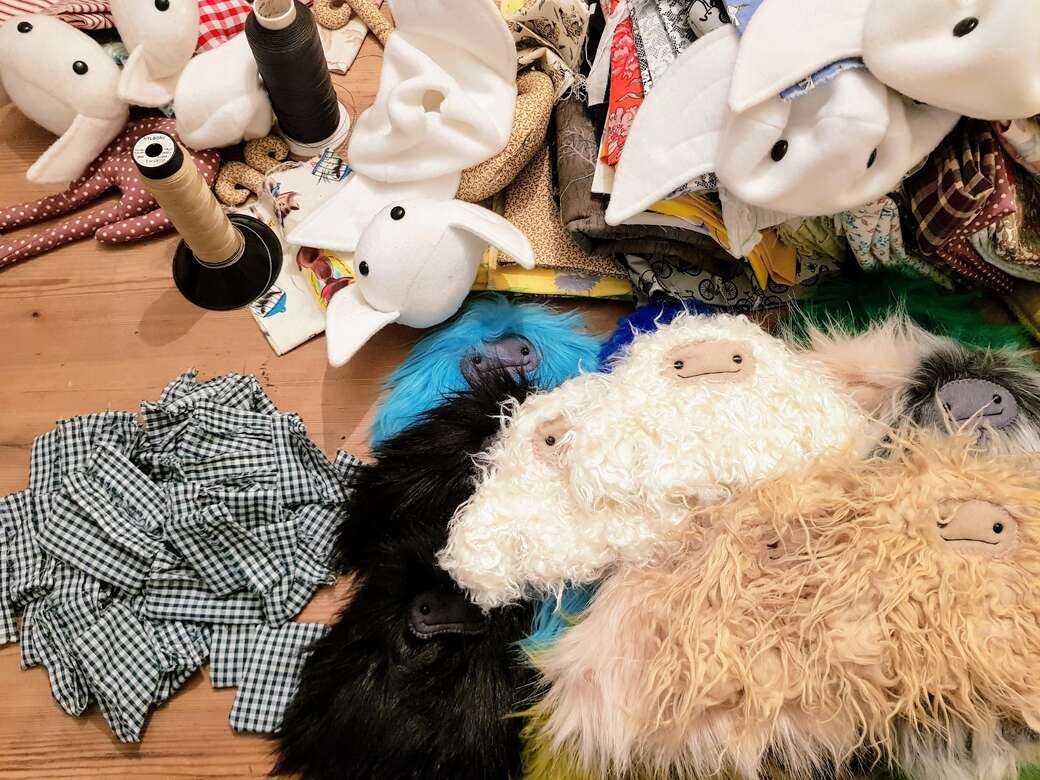
Creative people need an inspiring environment to work in. This means different things to different people. We don’t all need the same environment to create and we are not all inspired by the same things.
This is very personal to just you.
You may have a spare room you can call a work room or studio, if so that’s great! On the other hand you might just have a basket with some supplies and a notebook, working at the kitchen table or on the sofa.
At the very least I would suggest a tray that can be used as a lap table, a notebook or sketchbook and some supplies for creating. This could be a pencil or perhaps needle, thread and scraps of fabric or a glue stick, old magazines and a pair of scissors. The key is, if you only have 10 minutes to be creative, you have your supplies at the ready (See Step 1.) It’s also a good idea to have inspirational images, words, colours or fabrics to inspire you. (See Step 3 & 5.)
If you are not sure where to start? Move on to step 5 and then come back to step 4.
Step 5 focuses on you, it is designed to help you identify and prioritise your preferences, helping you to prepare for creativity.
Step 5. Mind Map, Inspirational Mood Board, Self Portrait ~ Ideas to get you started.
Creativity Creator – Identify and Prioritise – Focus and Finish.
Procrastination is the enemy and like with any battle you need to be prepared. Think of your mind map as your battle plan. You need to identify strengths, values, aspirations and priorities as well as stumbling blocks and formulate a back up plan.
If I’m feeling overwhelmed or stuck-in-a-rut, I always start with a mind map.
It’s a tool I return to again and again. I always note the date and keep them, so I can reflect back on them later, to see how much I’ve moved forward, if my priorities have changed or if I have lost focus and need to regroup.


Start with an A4 sheet of paper, this can be in a note book or sketchbook if you prefer. I tend to use notebooks to keep all the ideas in one place, I now have a mini library of notebooks that I frequently refer back to for inspiration.
A single sheet of A4 printer paper will suffice, start by writing a motivational word in the middle, I find words like INSPIRATION, CREATIVITY, ASPIRATIONS are all good places to start. If you have never drawn a mind map before the idea is to let one idea flow to another into a spider’s web of interconnecting ideas that all stem from you.
I find mind maps help to identify what’s important, what if anything is preventing me from achieving my goals and helps me to formulate ideas and a plan.
I have included a couple of mind maps to give you an idea. These examples are scribblings of connecting thoughts and ideas. The highlighter pens help to pick-out key points.
Making a collage is another great way to get those creative juices flowing, especially if you find images more inspiring.
Below are examples of a mood board for creative inspiration on a specific theme, the other a self-portrait collage, prioritising important things.
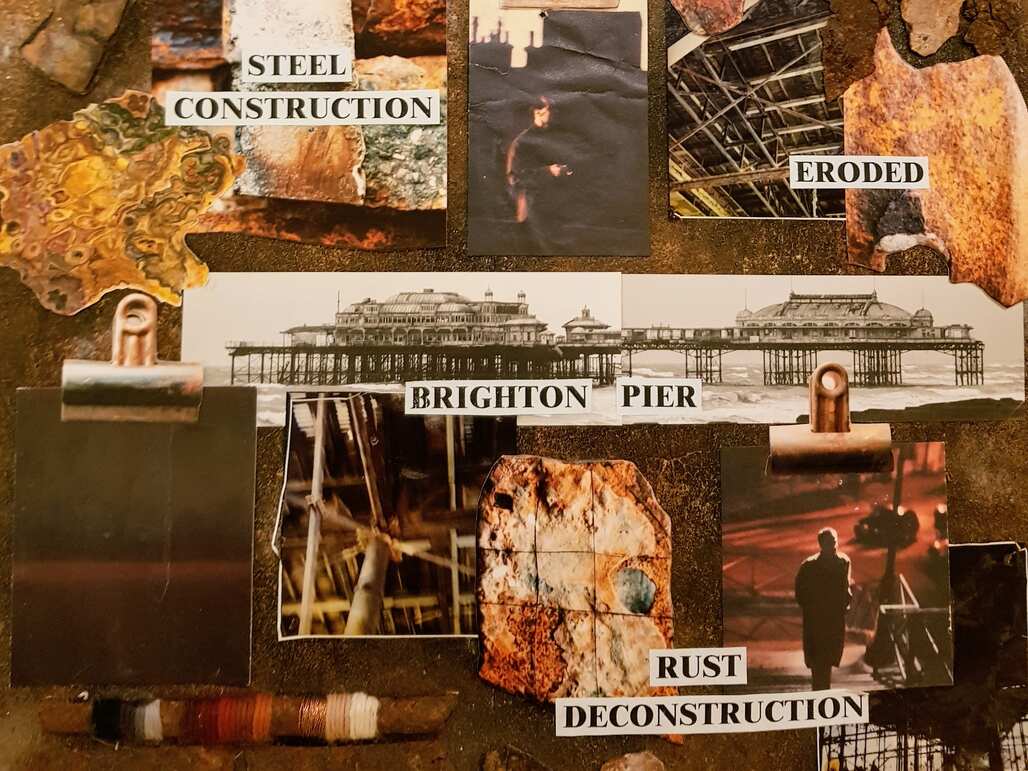

Step 6. Turn up every day, persistence is key, little and often
Like most things in life, we need to be present to really gain the most from the world around us.
As a teacher I would walk through the dining hall at lunch time and see all the kids looking down at their phones.
I don’t want to sound preachy and each to his own but I can’t help thinking what we could be missing if we don’t look up occasionally.


Being present means looking up from that tiny screen, putting it away in your bag or in another room. I used to leave mine in the car and wouldn’t notice for a couple of hours) In step 2 you made a commitment, so whether its 10 minutes or 30 minutes, be present, be focused, be committed, you will be surprised by how much you can achieve with the little and often approach.
Step 7. Be kind to yourself, sometimes life just gets in the way.


Having given the ‘be present’ speech in step 6, it’s also important to be kind to yourself.
Sometimes life does get in the way, It could be something good, like spending time with family and friends or perhaps something not so good. Either way life is what it is, with it’s ups and downs, good times and bad. Like the spaghetti westerns my dad loved so much and subjected us to often, life tends to be many things including, the good, the bad and the ugly.
My best advice to you, based on personal experience, is to give yourself a break, don’t be too hard on yourself.
If you didn’t do your 10 minutes of creativity today, tomorrow you can do 20 minutes.
Alternatively if you prefer, start afresh with a clean slate, even if tomorrow becomes the next day, try to treat yourself as you would others, with kindness.
Make yourself a cup of tea, take a walk, look at your mind map to remind yourself what’s important.
The great thing is, tomorrow is a brand new day.
I remember something that was said to me at a slimming group while trying, unsuccessfully, to lose weight.
“Just because one flower is wilted, doesn’t mean you have to throw out the whole bunch.”
Basically don’t give up because you have had a set-back. (See Steps 2. and 6.)
Step 8. Evaluate, reflective practice.
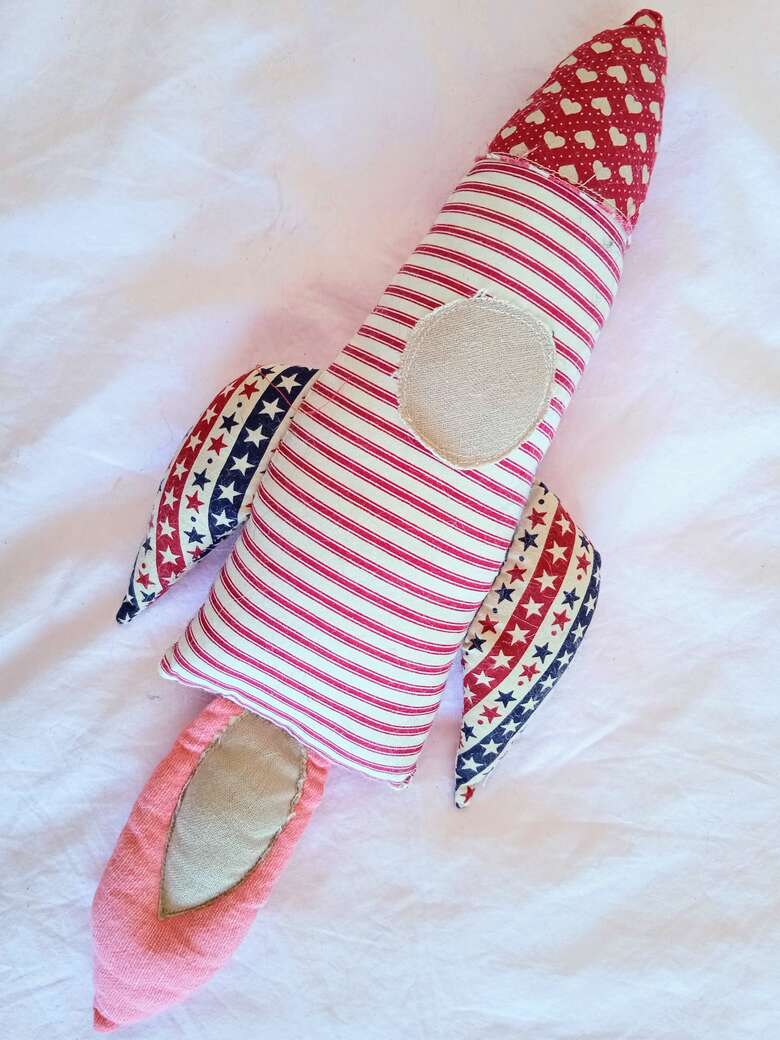


Evaluation and reflection are skills I learned at University. At the end of each piece of coursework we had to present it to the tutors and other students for their critique.
Despite that inner voice saying…
“If you cant say something nice, don’t say anything at all!”
I have found value in the critique process.
Having said that there’s a world of difference between “I hate it!” which is negative and not at all helpful, and “If I’m really honest, I don’t like the colours but I do like the scale and composition, have you thought about a trying a different colour palette?”
In this second example, you are following criticism with a compliment and offering a solution.
There are many different ways to evaluate and reflect on your work, I believe self-reflection and self-evaluation to be essential tools for learning from mistakes and improving your work.
It's important to develop an inner voice that is both kind and objective.
If you really do hate it? Speaking about your our own work, sometimes allow your inner voice to express that. However, always try to see some value in what you have achieved, and work on how you can improve and progress from this point?
So those are my 8-Steps to inspire creative practice everyday. All 8-steps have been rigorously tried and tested by myself and they work for me.
I hope you are inspired to have a go and that, the information contained in this self-help guide, works for you too.
Having said that please remember that we are all different. This information is based on my own experience and opinions, it should not be taken as a guarantee for specific results or in place of professional advice.
Did you enjoy reading this FREE article?
Would you like to read more?
YES!
Then please consider making a small donation using the donate button in the menu above.
There is no obligation whatsoever but your support is very much appreciated and helps to keep this site free from those pesky adverts.
Thank you x
I chose Holiday Sewing: Scrappy Fabrics ~ Small Stitch Experiments, for my 30 minutes of daily creative practice.

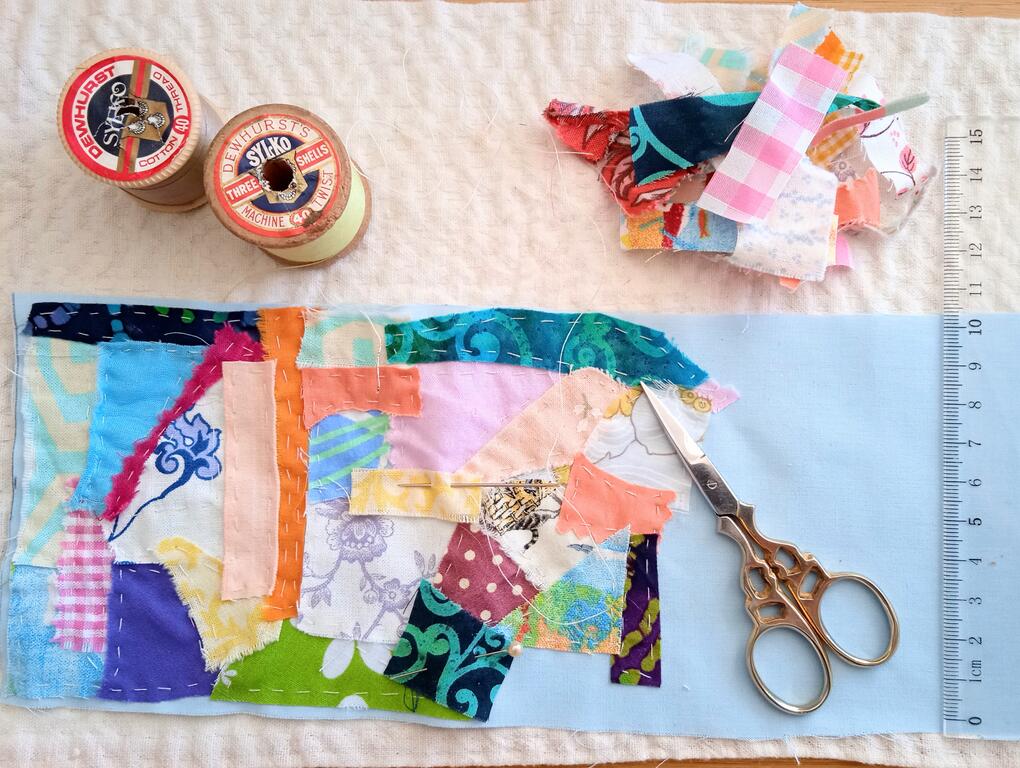
I’m really enjoying the meditative element to making these slow-stitched, mini-fabrics, making something cute out of what would probably end up as landfill, or burned at one of those large incinerators.
I have made a commitment is to work on these small stitch experiments, for 30 minutes every day.
I will update this post with some pictures of the scrappy fabrics I make.
Have you tried The Crafting Creativity Project yet?
Let me know, how you got on, in the comments.
Good Luck & Happy Making x


